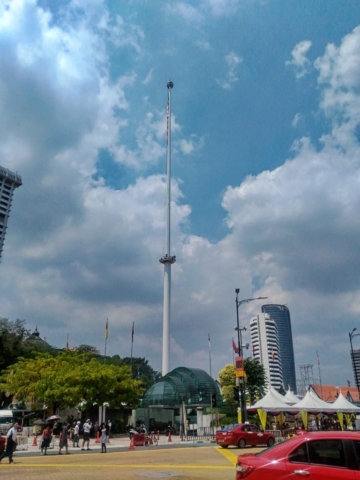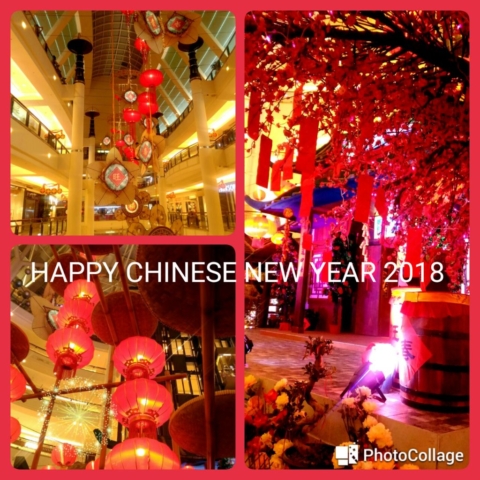History
It is assumed that the first inhabitants of the Malaysian Peninsula came from southern China and Taiwan, and some of them traveled further south to the Philippines. These people became the ancestors of today’s Malaysians (they were called the Negritans) and were ethnically similar to the people of Sumatra, Java, and the Philippines.
Other settlers and traders came from India. They brought gold, spices, rare woods, but also their culture and religion. Hinduism and Buddhism began to spread throughout the peninsula, including temples and Indian traditions. In the 2nd and 3rd centuries, small local kingdoms were founded, inspired by the strong Indian influence, and their rulers began to call themselves the Rajahs. Indian influence is still visible in some Malay traditions.
Around 1400, a group of refugees headed by Prince Paramesvaro arrived on the peninsula and established a kingdom called Melaka. From the original royal refugee village, it became a rich kingdom and an international spice trade center, inspecting trade routes in the Malaysian Strait, and rapidly becoming the most influential port of Southeast Asia.
At the same time, with merchants to Melaka, Islam came and spread throughout the territory. In the mid-15th century, Melaka became the Muslim kingdom, and rulers were called themselves Sultans. The wealth of Melaka soon attracted the attention of Europeans.
The Portuguese fleet arrived in the 16th century and the period of colonialism started. Later Malaysia became a colony of the Netherlands and Britain. After the Portuguese and the Dutch colony, we can see their sights and architecture here. Thanks to the British colony, some English words have spread to Malay and English is the second language used. At the end of the 19th century, the influx of Chinese immigrants began to rise and created a strong community. During the Second World War, the territory was occupied by Japan, and after its termination, it brought about the end of the British colonial rule.
On 31 August 1957, Malaysia finally gained independence from Britain and became an independent state. The first Malay flag was in Merdeka Square (Independence Square). Six years later, Malaysia was formed on 16 September 1963 by Malaysia and Singapore, as well as the eastern Malaysian states Sabah (known as North Borneo) and Sarawak on the north coast of Borneo. In 1965, after a few bloody racial unrests from the Malaysian Federation, Singapore was ruled out because its majority Chinese population and the influence of the People’s Action Party were considered a threat to Malaysia’s dominance and became a separate country.
Malaysia – officially the Federation of Malaysia (Federal Constitutional Monarchy)
The country is multiethnic and multicultural. From the beginning, there were disagreements between the two largest groups. Majority Malays controlled government positions and agriculture, while the Chinese dominated the commercial and industrial spheres. These disagreements have also been with predominantly Chinese´s Singapore.
The government has begun to address tense relations between the Malaysian and ethnic Chinese and to build a new national unity. Yet still, politics is dominated by the Malaysians, and the economy is the dominant feature of the Chinese.
The country is a mixture of a modern world and a developing nation. By investing in high-tech and medium-grade oil, it has become one of the richest countries in Southeast Asia.
Policy
The head of the state is the king, who is elected 9 hereditary monarchs of member states. The election is according to the rotational principle for 5 years. The King performs a ceremonial function, appoints a prime minister, a judge of the Supreme Court and an ambassador. He accepts credentials of foreign ambassadors, grants state honors and graces. In practice, the King is only the nominal head of state, while the prime minister is the one with the highest authority in the government. The federal government is based in Putrajaya.
Religion
The Constitution confers freedom of religion but recognizes Islam as the established religion of the country. Departure from Islam is criminal.
People
Half of the population is ethnically Malaysian, with other large minorities being Chinese, Indians and descendants of indigenous natives. In general, local people are nice, hospitable and a bit lax (they have enough time).
Culture
There is no common Malay culture. China and Indian culture have a significant influence since the start of foreign trade. Other include culture from Persia, Arabia, and Britain. In 1971, the government created a “national cultural policy” that defines Malaysian culture. He states that Malay culture must be based on Malaysia’s native culture, that it may include appropriate elements from other cultures, but Islam has a role in it. In addition, a “national cultural policy” promoted the Malay language over others. This government intervention in culture has caused resentment, as other people felt that their cultural freedom has been reduced.
One of the hallmarks of culture is the celebration of various festivals and events. Although festivals often come from a particular ethnic background, they are celebrated by all people in Malaysia, but Islamic feasts have a nationwide attention (especially the fast of the month of Ramadan). One interesting feature during the celebration is the so-called “open house” when the Malaysians invite family, friends, and others to their home for a traditional food.
Ramadan (every year, another time) – during the 29 or 30 days, Muslims are fasting from eating, drinking and smoking from sunrise to sunset. Its purpose is to come closer to the spiritual essence of Islam. Aliens and believers of other religions in these countries should adhere to certain rules (they should not eat, drink, smoke, chew or inappropriately dress up in public). If tourists do not respect these rules, they may be warned, punished and threatened with jail. At the end of the month is the festival Eid ul-Fitr, known locally as Hari Raya Puasa or Aidilfitri.
Eid ul-Adha / Hari Raya Haji or Aidiladha (every year, another time) – is a festival of sacrifice, reminds Ibrahima’s willingness to sacrifice his son as the act of obedience to the command of God (but God offered him the sacrifice of the lamb before). During the festival animals are sacrificed and divided into three parts: one third is given to the poor and needy; the last third to relatives. During the festival, Muslims wear the finest traditional clothing.
Chinese New Year (around January / February) – it is one of the most important and most famous festivals and includes the largest annual mass human migration in the world. The New Year’s Festival is associated with several myths and customs. The windows and doors are decorated with red colors and tapes with popular themes of “happiness”, “wealth” and “longevity”.
Deepavali / Diwali (around October / November) – Hindu festival of light Thaipusam, which comes from classical India and is one of the main cultural celebrations among the Hindus. Diwali symbolizes the spiritual victory of light over darkness, goodness over evil, and knowledge over the ignorance. The largest parade in the country takes place in Batu Caves, north of Kuala Lumpur. Men carry decorated altars to the temple with religious hooks pierced in the skin. This ability is attributed to divine intervention and religious fervor. Women are joining the procession and carrying a pot of milk on their heads.
Wesak (around May / June) – Buddhist feast, Buddhists celebrate three important events in the life of the Buddha – his birth, enlightenment and the departure of the human world. The feast begins at dawn when devotees gather in Buddhist temples. The celebration is highlighted by the light procession.

